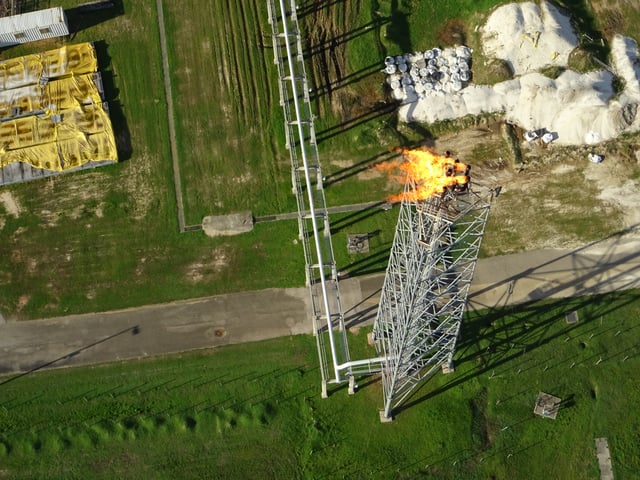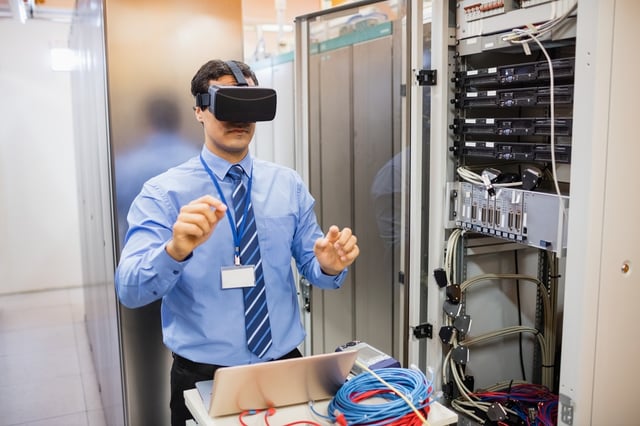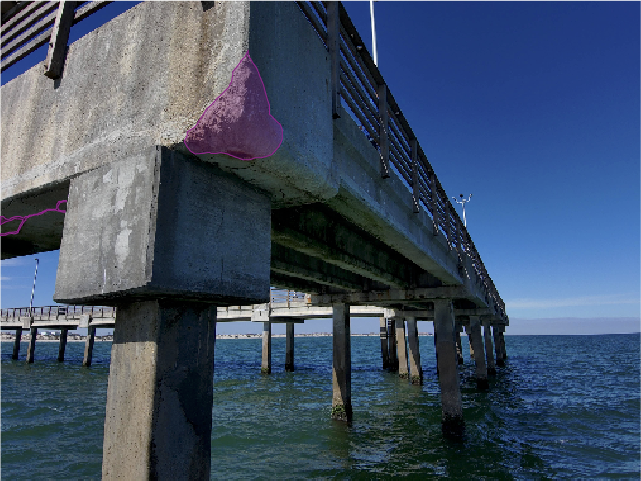The monitoring and maintenance of the oil and gas infrastructure are critical in ensuring safe and efficient operations. But maintaining thousands of kilometers of the pipelines as well as other facilities, some in remote and hostile locations, is not an easy task. Usually, the maintenance of in the oil and gas industry plants and infrastructure takes about 40% of the overall budget and may be higher for complex systems. Maintenance increases the level of service availability while allowing the company to comply with regulations.
Using the traditional maintenance technologies and approaches is both logistically and economically challenging for many companies, especially when working in harsh environments. To remain competitive, the companies must invest in modern technologies which have the potential to reduce the financial and safety risks, hence improve operations, efficiency and revenues.
The oil and gas industry is embracing various modern technologies with the aim of increasing the efficiency and reduce costs. To know what is working, here are the 5 innovative technologies changing the maintenance management in the oil and gas sector.
Industrial Internet of Things (IIoT) and connected objects
IIoT in the oil and gas industry can help accomplish several business objectives including optimizing the operations and improving the reliability, safety, cost savings and efficiency. It involves adding sensors to the various components of an oil and gas system and using technologies such as drone inspection technologies so that they can collect data and make it available from a central place such as the cloud. People can then access these through the internet or local network using smartphones, tablets, or computers.
The various components are interconnected through the wired and wireless networks so that they can communicate with one another. This allows real-time machine-to-machine communications, collection, and sharing of data from the oil and gas components, as well as remote control of the devices from mobile or desktop computers. Further, adding AI enables such as BlueVu the systems to automatically adjust themselves based on the sensor data. The sensors can be configured to send alerts and also communicate with other connected devices so that they can respond automatically and help in preventing problems escalating to other areas.
Integrating different types of sensors, communication systems, and software tools for data analytics enable the company to collect field data in real time, hence the opportunity to respond or make decisions quickly. The IIoT makes it easier to monitor and control the components remotely using a variety of devices, hence cutting down on time and cost of visiting a location or structure physically.
There are a wide variety of sensors to monitor different types of parameters and send alerts when there are anomalies or defects. This enables the managers or maintenance teams to promptly detect gas leaks, spillages, fires, corrosion, and other problems associated with the industry.
Flexible undersea robotics arms
Companies have been using the Remote Operating Vehicles (ROVs) for the inspection and repair of undersea oil facilities. In such an exercise, the ship delivers and positions the ROV at the location to inspect. Afterwards, an operator onboard the ship controls the ROV as it inspects or repairs the structure. This is usually an expensive and time-consuming process that companies are replacing with advanced robotics.
The robots which are specifically designed for undersea tasks such as inspections, cleaning, and maintenance, are self-propelled and do not require the support of an ROV as with the older systems. It, therefore, reduces the costs of inspecting and maintaining the undersea facilities and can also perform other tasks such as adjusting the valves and chokes as well as detecting and responding to emergency situations.
A typical system is the Eelume snake-like underwater robot. This has a robotic arm to carry out various undersea inspection and maintenance tasks. This has a modular design that enables it to access hard to reach locations in the structures. In addition, it is capable of forming a U-shaped dual arm that enables it to hold and use a diverse set of tools including grippers, torque tools as well as sophisticated maintenance equipment. The robot can be fitted with different sensors and capabilities so as to perform various tasks that would otherwise require launching and retrieving of ROVs, or expensive surface vehicles and divers.
Another snake-arm robot, the OC Robotics P100 from OC robotics, is capable of inspecting the oil and gas pressure vessels in the seas. This is suitable for hazardous environments as well as confined spaces. The robots are usually controlled by specialized software programs and driven by wire ropes. They can navigate and move around cluttered and confined spaces since it’s only the arm that goes up to the workspace, while the control, electronics and drive motors systems are more open space away from the inspection area.
The robotic vehicles are suitable for both new and existing offshore oil facilities and can be installed permanently on the seabed to perform on-demand and planned inspections, maintenance or intervention tasks. This eliminates the use of costly surface vehicles that usually support the maintenance teams in carrying such operations. Different sensors, tools, and capabilities let it perform a wide range of functions while eliminating or reducing human entry into dangerous, hazardous, and difficult to access spaces.
Virtual Reality for training
Training employees on how to effectively and safely work on existing and new technologies is very expensive. But organizations can take advantage of new technologies such as the virtual reality which provides a cheap and repeatable means of imparting knowledge. One of the advantages is that the technology gives an almost real-life experience and can be very useful for training employees on how to respond to emergency cases without really having to be in such a situation.
The employees can even experience the realistic feel of a new environment they are about to encounter without setting foot there. In addition, companies can use the VR to train the workers on specific tests and therefore equip them with the necessary skills that will enable them to perform better and safely while in the field. With the right skills, the workers will take less time and cause very little if any errors.
Advanced training systems may even have a grading system that is based on the compliance to procedures, as well as time taken; this allows the trainees to improve on how they perform their tasks.
Fiber cable network testing equipment
Relying on modern technology require efficient and fast communications channels to ensure that the data collected by the many nodes is transmitted in good time without delays. Timely information is critical in making decisions that affect the operation of any organizations.
Most companies use the fiber cables since they provide the fastest data transfer rates and do not suffer much from interference such as EMI which may affect the quality of data. Additionally, they are less prone to damages from harsh conditions such as chemicals and corrosion. They can conveniently transfer large volumes of data including images and videos that require large bandwidth in real time and over long distances running into thousands of kilometers.
However, maintaining the fiber cables, adding more or troubleshooting is often a challenge in the harsh environments. In most cases, this requires deploying a number of test tools at both ends of a cable, whether a new installation or for maintenance purposes. But recent advances such as the Fluke Networks OptiFiber® Pro OTDR is providing companies with a low cost and fast fiber cable testing solutions.
It uses SmartLoop testing technology that enables it to analyze two fibers in a single test. This does not require testing equipment at both ends of the cable and hence eliminates the need to travel to the other side of the connection. As such, organizations are able to reduce their troubleshooting time by about 50% while using fewer tools and personnel. In addition, it removes the need to travel to the other end of the cable, which may be in a difficult to reach, or hostile location. Ultimately, this reduces the time, resources and traveling costs - all of which helps organizations to reduce the maintenance costs and time to fix network problems.
Non-destructive inspection
The NDT techniques vary according to the type of test to perform, but overall, they all eliminate the need to interfere with the equipment. For example, when inspecting the pipes for corrosion under the insulation, the technician does not need to remove the coating or insulation. This not only reduces the maintenance costs, but also retains the integrity of the components since it does not alter the structure or introduce any weak points.
Traditional NDT technologies have limitations when analyzing the surfaces that are covered by insulation. This limits the effectiveness of the technologies in determining the thinning of pipes or degrading of vessel surfaces due to corrosion. For this reason, industries are adopting advanced non-destructive inspection tools and methods that not only allow them to retain the integrity of the structures equipment but also reduce the inspection and maintenance costs as well as shutdown time.
One of this is the Eddyfi corrosion inspection tool that is capable of efficiently performing tests between the metal and the coating. The under insulation test tool uses the eddy currents to detect any corrosion under the insulation that may not be visible on the surface. The pulsed eddy currents (PEC) method is a screening technique for measuring the remaining wall thickness and hence determining the extent of the corrosion or wear in carbon steel pipes. It works over the insulation, weather jackets, corrosion blistering or scabs, concrete and other non-ferrous materials, hence reducing time and cost of removing and restoring these covers.
This saves the technicians a lot of time while enabling the companies to rectify the problems before the structures fail completely and cause leaks and other issues.
Some of the common NDT methods include the
-
Guided Wave Technology
-
Corrosion Under Insulation (CUI)
-
Computer Radiography and Digital Radiography.
-
Infrared Thermography
-
Positive Material Identification (PMI).
Why oil and gas companies should embrace innovative technologies:
Innovative technologies are helping oil and gas companies to overcome challenges such as space constraints, harsh weather conditions, difficult terrain, and other hostile environments. These have the potential to overcome a wide variety of operation and logistical challenges in the offshore oil rigs including housing, protecting workers, and providing quick evacuation in case of emergencies. As such, the companies can improve the efficiency and boost revenues in addition to reducing the safety risks.
The technologies such as IIoT and drone-based inspections provide timely access to critical information relevant for maintenance purposes hence reducing time to respond, perform tasks or address issues.
Tags
Oil and Gas





.png)
